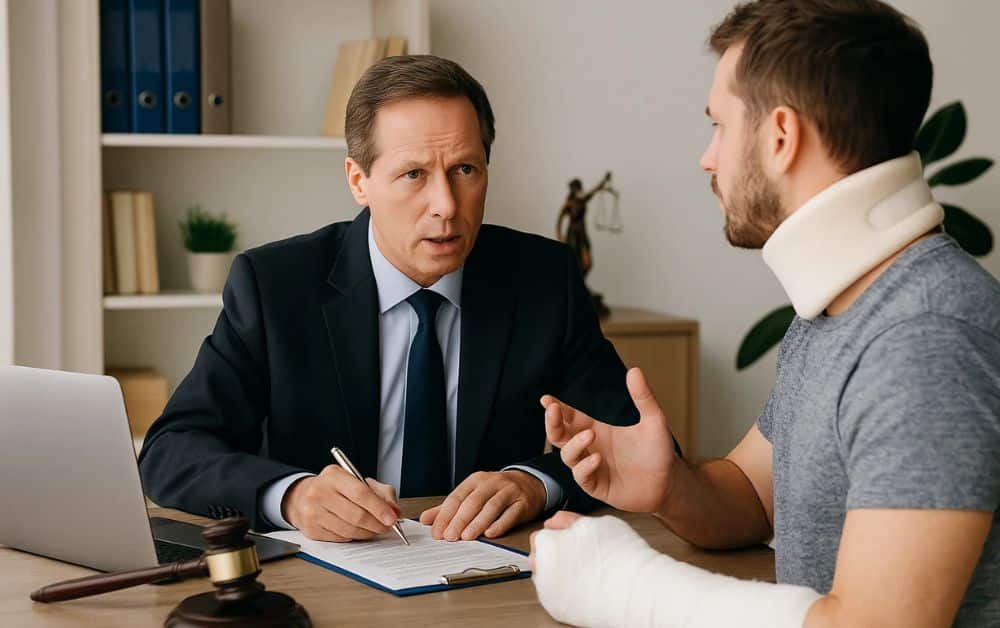+65 63232320
9am to 6pm
A Step-by-Step Guide to Filing a Personal Injury Claim

Accidents happen when we least expect them, and their impact can leave victims struggling with medical bills, lost income, and emotional distress. Whether it’s a car accident, workplace injury, or a slip-and-fall, filing a personal injury claim can help you recover compensation for your losses. However, the process can feel overwhelming if you are unfamiliar with the steps involved.
This step-by-step guide will walk you through how to file a personal injury claim effectively, ensuring you know what to expect at each stage.

Step 1: Seek Immediate Medical Attention
The very first step after any accident is to prioritize your health. Even if your injuries seem minor, it is important to get medical care. Some injuries, such as internal trauma or concussions, may not be immediately visible but can worsen if left untreated.
Medical records not only ensure your well-being but also serve as crucial evidence in your personal injury claim. They help establish a direct link between the accident and your injuries. An Accident Compensation Lawyer in Singapore can guide you on how to effectively use these records to strengthen your claim.
Step 2: Document the Incident
Accurate documentation strengthens your case. As soon as possible, record all details of the accident:
- Take photos or videos of the accident scene, your injuries, and any property damage.
- Collect contact information of witnesses who can provide statements.
- Obtain copies of police reports, workplace incident reports, or any other official documentation.
This evidence will be invaluable in proving fault and supporting your claim.
Step 3: Notify the Responsible Parties
Once you have documented the incident, notify the party or parties responsible for your injury. This could be an employer, property owner, or another driver involved in the accident. In addition, inform your insurance company about the incident to initiate the claims process.
Step 4: Consult With a Personal Injury Lawyer
Filing a personal injury claim can be complex, especially when insurance companies attempt to minimize payouts. Consulting with an experienced personal injury lawyer ensures your rights are protected.
A lawyer will:
- Evaluate the strength of your case.
- Estimate the value of your claim, including medical expenses, lost wages, and pain and suffering.
- Handle communication with insurers and opposing parties.
- Guide you through negotiations and, if necessary, court proceedings.
Having professional legal support increases your chances of receiving fair compensation.
Step 5: File the Claim
Your lawyer will formally file a personal injury claim on your behalf. The claim typically includes:
- A detailed account of the accident.
- The injuries sustained and medical treatments required.
- The financial and emotional impact of the accident.
- A demand for compensation.
Filing promptly is critical, as personal injury claims are subject to a limitation period. Missing the deadline could mean losing your right to compensation.
Step 6: Investigation and Evidence Gathering
After you engage a lawyer, the investigation or the review process begins. Both your lawyer and the opposing party (once the initial claim by a letter of demand is made) will review evidence, interview witnesses, and assess medical reports.
Your lawyer may also bring in expert witnesses—such as accident reconstruction specialists or medical professionals—to strengthen your case. The more compelling the evidence, the better your chances of reaching a favorable settlement.
Step 7: Negotiation and Settlement
Most personal injury claims are resolved through settlement rather than going to trial. During this stage, your lawyer will negotiate with the insurance company or the opposing lawyer to reach a fair agreement.
A settlement should cover:
- Medical expenses (past and future).
- Lost income and reduced earning capacity.
- Pain and suffering.
- Property damage, if applicable.
However, please note that the above will be subject to the issue of liability, i.e. the issue of fault or responsibility for the cause of the incident / accident.
If the insurance company refuses to offer a fair settlement, your lawyer may recommend proceeding to file your claim in court.
Step 8: Court Proceedings and Trial (If Necessary)
If a settlement cannot be reached, your claim will go to court. During the court proceedings, typically parties will first attempt to negotiate and if both sides are unable to reach a settlement, then parties will be proceeding for trial / hearing; where both sides will present evidence and arguments, and a judge decides the outcome. While trials can be lengthy and stressful, it may be required if Parties are unable to reach a settlement.
Step 9: Receive Compensation
Once a settlement or trial verdict is reached, you will receive your compensation. This payment helps cover medical bills, lost wages, rehabilitation, and other damages / losses caused by the accident.

Conclusion
Filing a personal injury claim may seem complicated, but following a structured process makes it manageable. From seeking medical care and documenting the accident to consulting a lawyer and negotiating a settlement, each step is essential in protecting your rights and securing fair compensation. For accident victims seeking trusted legal support, Dhillon & Panoo LLC shines as a dedicated firm that provides compassionate guidance and skilled representation every step of the way.









